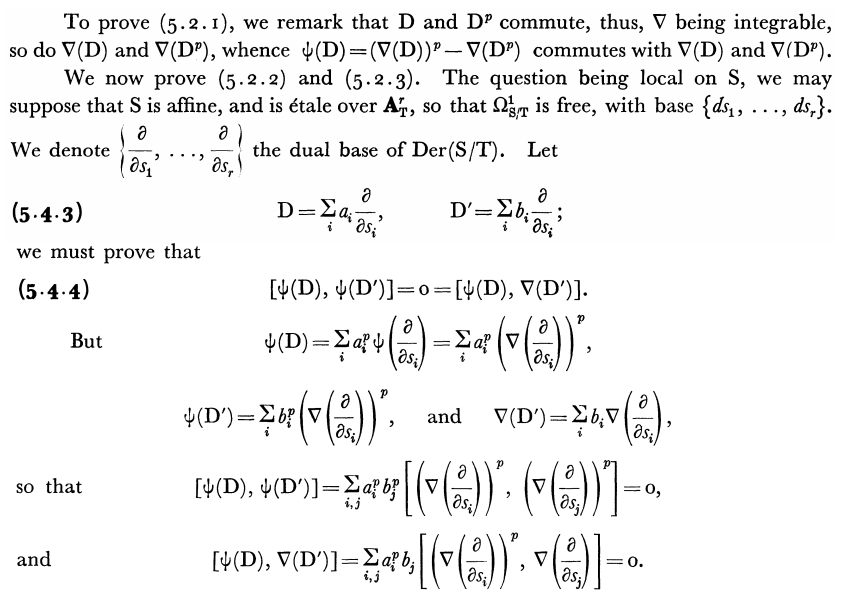I am studying N. Katz's paper "Nilpotent connections and the monodromy theorem: applications of a result of Turrittin" where I found a fairly good account on $p$-curvatures.
I don't understand the following proof:

Let :
$\Psi: \operatorname{Der}(S|T) \to \operatorname{End}_T(\mathcal E)$
$D \to (\nabla(D))^p -\nabla(D^p)$
Where $\nabla: \operatorname{Der}(S|T) \to \operatorname{End}_T(\mathcal E)$ such that: $\nabla(D)(ge) = D(g)e+g\nabla(D)(e)$, $e$, $g$ and $D$ sections of $\mathcal E$, $\mathcal O_S$ and $\operatorname{Der}(S|T)$ respectively and $\mathcal E$ is a vector bundle on $S$.
To prove $(5.4.4)$, we have by $p$-linearity and additivity of the p-curvature:
$$\Psi(D)=\sum_i a_i^p \Psi\big( \frac{\partial}{\partial s_i}\big) = \sum_i a_i^p \Big(\nabla\big(\frac{\partial}{\partial^p s_i}\big)\Big)^p -\sum_i a_i^p \nabla\big(\frac{\partial^p}{\partial s_i^p}\big)$$ but the term $\sum_i a_i^p \nabla\big(\frac{\partial^p}{\partial s_i^p}\big)$ disappears in the proof and I don't see why?
At the end of the proof, it looks like we use the fact that $\frac{\partial}{\partial s_i}$ and $\frac{\partial}{\partial s_j}$ commute, but why is that true?
